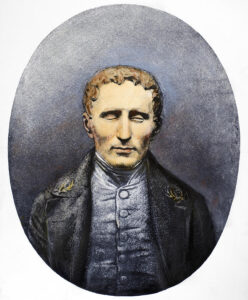 Louis Braille was born in France on January 4, 1809, 216 years ago as of tomorrow. Although more than two centuries had passed at the time, the United Nations in 2019 adopted World Braille Day to emphasize the importance of Braille in promoting accessibility, independence, and dignity for people with visual impairments. The annual observance on January 4 highlights the global need for inclusive education, communication tools, and policies that uphold the rights of visually impaired individuals.
Louis Braille was born in France on January 4, 1809, 216 years ago as of tomorrow. Although more than two centuries had passed at the time, the United Nations in 2019 adopted World Braille Day to emphasize the importance of Braille in promoting accessibility, independence, and dignity for people with visual impairments. The annual observance on January 4 highlights the global need for inclusive education, communication tools, and policies that uphold the rights of visually impaired individuals.
At the age of three, Louis stabbed himself in the eye with a stitching awl (a pointed tool used for puncturing holes in leather) inside his father’s harness shop. An infection set in and eventually spread to both eyes, resulting in total blindness.
A few years following his accident, Louis attended the National Institute for Blind Children in Paris. There, his interest in music would benefit him when at the age of 10 he would meet Charles Barbier, a captain in Napolean’s army. The captain taught the students about a communication code using dots called Night Writing. Combining his knowledge of music and the inspiration of code communication, Louis Braille invented a six-dot fingertip reading system when he was only 15 years old.
In 2022, the Braille Works Company compiled a list of ten interesting facts about the language of Braille in honor and recognition of Braille Day.


